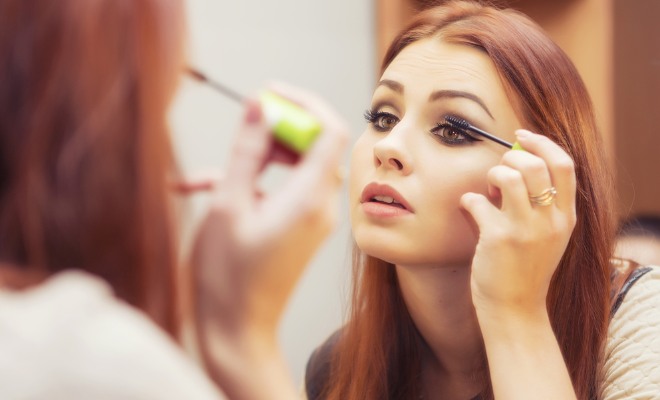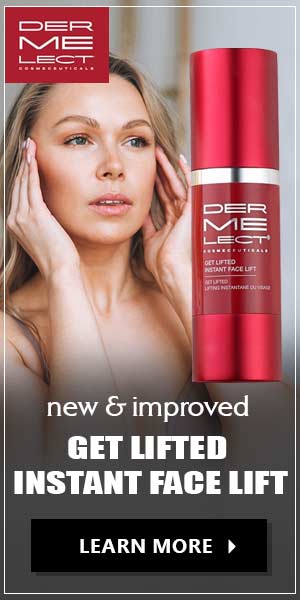When talking about all things beautiful, the eyes always come up at the top.
No wonder men and women are all scrambling to find ways to enhance, brighten, and draw attention to their eyes.
If you want to achieve a gorgeous eye look without having to bother with an eyelash enhancer, fake eyelashes, or the side effects of eyelash extensions, you should try tightening and waterline techniques instead!
These techniques require a bit of practice and experimentation to perfect, but I assure you, the results are worth it.
So, keep reading to learn more about how to do this, and some tips from experts!
What Are Tightlining and Waterline Techniques?
So, what do tight line your eyes mean? Tightlining is a makeup technique that makes your lashes look darker, thicker, and fuller.
Also known as the invisible liner, you do this by applying black eyeshadow or pencil eyeliner to fill in the gaps between the hair strands of your lashes and make the color of your iris pop, says celebrity makeup artist Suzy Gerstein.
Water lining, on the other hand, is lining the wet inner edge of your eyelids underneath your lash line with damp eyeshadow, a cream eyeliner, or a pencil.
It is not advisable to use liquid eyeliner as a waterline eyeliner because it takes a longer time to dry, tends to wash right off, and may leak onto the eyeballs leading to irritation or pain.
How to Tightline Your Eyes?
Did you somehow find yourself reading yet another FEG eyelash enhancer review or an article promoting the Best Eyelash enhancers?
You’re not alone! Many people are eager to find out how they could make their lashes more prominent and bold-looking.
Fortunately, you probably have all the tools you need to achieve this right in your makeup bag!
You might be surprised by how much more you can do with your eyeliner.
Here’s how you can tightline your eyes:

Tightlining And Waterline Techniques – Image/Shutterstock
Step 1. Clean Your Hands
Whenever you have to touch your face, especially near your eyes, make sure your hands are clean to avoid irritation or infections.
Step 2. Pick An Eyeliner Product
Choose which of the mentioned products you are most comfortable using depending on your skill level.
You can use a eyeliner product like Revitalash.
Step 3. Prep Your Tool
If you’re using a pencil, make sure to sharpen it first.
If using shadow, fill your brush with pigment. Usually, gel, cream, and liquid liners come with applicators.
Step 4. Lift Your Eyelid
Lift and hold your eyelid in place, so you have a clear and accessible view of your lash line.
Step 5. Apply Liner On Upper Waterline
Trace your waterline back and forth until you achieve your desired color and thickness. Do this in both eyes as evenly as possible.
Step 6. Tightline Your Lash Line
To apply pigmented eyeshadow, run and wiggle the edge of your brush or push the product up to your lash line along the base of your eyelashes, going from the outer to the inner eye corner.
If you’re using eyeliner, dot between your lashes.
Step 7. Lower Lashes
You can end with the previous step or opt to add more pop to your eyes by running eyeliner on your lower lashline. To avoid tearing up, most prefer to put liner just below the lower waterline.
Note, also, that how thick you like this can affect your whole look.
Step 8. Finishing Touches
Finally, you can clean up smudges with a cotton bud, curl your lashes, or apply mascara to finish your look.
Lashline vs. Waterline. What’s the Difference?

Lashline vs Waterline – Image/Shutterstock
The first thing you should know before we get into tightening is the difference between these two parts of your lids which are so close together that they often get confused for each other.
The Lash Line is the portion of your outer eyelid where your eyelashes grow out from.
On the other hand, your waterline is found behind the lash line and gets its name because it is closer to your eyeball, which is always wet.
These are the rims of your lids that touch each other when you close your eyes.
Both have upper and lower versions, contrary to the notion that the lash line on the upper lid and the eyelash waterline is on the lower lid.
History of Tightlining
Tightlining, as a makeup trick, may seem too complicated and advanced, but many modern makeup artists and enthusiasts have been using this long enough to develop hacks to make the process easier for us.
The leading influencers in the makeup industry Laura Mercier and Kevyn Aucoin made the technique famous.
It is designed to define your eyes without making the eyes makeup too obvious.
When properly done, you should end up looking like you are not wearing any eyeliner at all.
So, your eyes look more alive and bigger naturally.
According to Suzy Gerstein, the technique was also used by the late makeup artist Way Bandy in his makeup manuals during the 70’s, and the 80’s, which is even before it was called tightlining.
The technique is also a great way to level up your smoky eyes or keep shimmer shadows in place.
Tightline hooded eyes or eye shapes that look droopy or overly done with normal eyeliner to give them that extra pop.
Picking The Perfect Tightliner Tools
The key to perfecting any craft is using the right tools.
For tightening, you want to make sure to get the right brush and liner.
A flat or angled brush with sturdy yet soft and gentle bristles is your best bet.
This will allow you to control the brush and also minimize irritation of your eyes or lids.
You can opt for either gel, pencil, cream, or liquid liners for tightlining.
However, since you will be applying it to your splash zone, it is important that you choose a waterproof formula.
Here are short descriptions of each option:
-
Pencil Liners
Tightline for beginners is easiest using a pencil liner.
It is easy to control and takes virtually no time to dry and set.
They are also easy to remove in case of mistakes.
-
Gel or Cream Liners
Gel or cream liners are commonly used by makeup artists because they apply smoothly, are longer-lasting, and create more dramatic looks.
Note however that using these requires more skill and a steady hand.
-
Liquid Liner
Again, liquid liner is not recommended for tightlining. However, if you prefer this, use a felt-tip pen or a thin-pointed applicator for best results.
Tightlining and Waterlining Tips
Here are some more helpful tips and tricks to make sure that your tightlining is on point:
- Use good quality eyeliner and a soft, clean brush to tightline sensitive eyes to prevent irritation and infection.
- If your eyes are close-set, only apply liner up to the middle. For wide-set eyes, fill all the way to the inner eye going from dark to light.
- Opt for a plastic twist up pencil liner instead of a wooden one since wood can splinter and the edges may irritate your eyes.
- Apply cream or gel liner with a flat or angled brush for better precision.
- Sharpen your pencil everytime you use it to minimize your eyes’ contact with collected dirt, makeup, or bacteria.
- A sharpened pencil is also easier to use and control.
- Never borrow another person’s eyeliner to avoid contamination and spread of eye infection.
- Tracing your eyeliner with the same heaviness up to the inner eye corner can make the look appear unnatural.
- It’s best to stop where your lash thins out or where your tear ducts begin.
- Tightlining the upper lid makes the eyes look bigger while doing so on the lower lid makes them look smaller.
- Using eye drops before applying your eyeliner may help you not to blink before the product dries.
- This will prevent it to transfer to the lower lid and lose its effect.
- Tilt your head when tightlighning your eyes.
- Hold a mirror on one hand and your eyeliner on the other.
- In this way, you can easily see the area that you’re lining without having to pull your eyelids.
- Do tightlining first before putting on mascara.
- Doing so can help prevent you from smudging the mascara all over your face.
- The combination of a dark mascara and a tightlined eye is no doubt, amazing.
- However, you need to carry out the techniques in the right order to ensure that your eyes will look its best all day long.
- Don’t close your eyes when performing this technique.
- This may seem like an obvious tip but there is a high tendency that you will close your eyes when you put on eyeliner.
- If you will do that, how can you be able to see what you are doing?
- Fighting off the urge will take some practice but you will get used to it later on.
FAQ’s:
Que: What is Tightline and waterline?
Ans: Tightline Known as invisible eyeliner, when you draw eyeliner inside the lash line, along the waterline.
Que: What does Tightlining do for your eyes?
Ans: It enhances the eye area and makes your lashes look fuller.
Que: Is Tightlining safe?
Ans: Tightlining Eyeliners Are Safe to Use on Your Waterline.
Que: How to tightline eyes without smudging?
Ans: A gel waterproof eyeliner applied with a synthetic brush is best for executing this technique.
Conclusion:
Tightlining and waterline techniques are not easy, but by taking your time to learn and following these tips, you’ll be rocking show-stopping eye looks in no time!
Like this post? There’s more. Get tons of beauty tips, tutorials, and news on the thebeautyinsiders Facebook & Twitter page. Like us on Facebook – we’ll see you there!
 By Wendy Gould
By Wendy Gould





